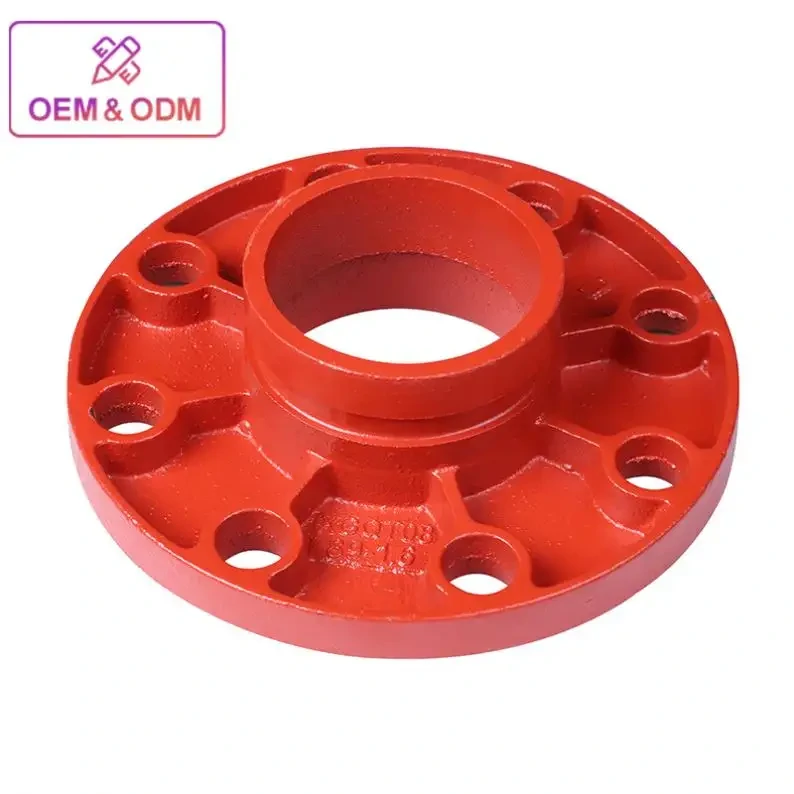Flanged ductile iron fittings are widely used in various piping systems for their strength, durability, and ease of installation. They come in a variety of types and configurations to accommodate different applications and requirements.
Here are some common types of flanged ductile iron fittings:
- Flanged Elbows: Flanged elbows, also known as flanged bends, are fittings used to change the direction of piping systems. They are available in different angles (e.g., 45 degrees, 90 degrees) and configurations (e.g., long radius, short radius) to suit specific layout and design requirements.
- Flanged Tees: Flanged tees are fittings used to create branch connections in piping systems. They feature a T-shaped configuration with flanged ends for easy connection to pipes. Flanged tees are available in various sizes and configurations, including equal tees and reducing tees.
- Flanged Reducers: Flanged reducers are fittings used to connect pipes of different diameters or sizes. They feature a concentric or eccentric design to facilitate smooth flow transition and minimize pressure loss in the system. Flanged reducers are available in both straight and tapered configurations.
- Flanged Crosses: Flanged crosses are fittings used to create branch connections at right angles in piping systems. They feature a four-way configuration with flanged ends for easy installation and connection to pipes. Flanged crosses are commonly used in complex piping layouts and distribution systems.
- Flanged Caps: Flanged caps, also known as flanged end caps or blind flanges, are fittings used to close or seal the end of a pipe or fitting. They feature a flat, disc-shaped design with flanged ends that are bolted or welded to the pipe. Flanged caps are used to prevent fluid leakage and contamination in piping systems.
- Flanged Adapters: Flanged adapters are fittings used to connect pipes or fittings with different end connections. They feature flanged ends on one side and a different end connection (e.g., socket, threaded, grooved) on the other side. Flanged adapters provide versatility and compatibility in piping systems with diverse requirements.
- Flanged Couplings: Flanged couplings are fittings used to join two pipes or fittings together in a straight line. They feature flanged ends with bolts and nuts for secure connection and alignment. Flanged couplings accommodate pipe movement, expansion, and contraction while maintaining a leak-tight seal.
- Flanged Expansion Joints: Flanged expansion joints, also known as compensators, are fittings used to absorb thermal expansion, vibration, and movement in piping systems. They feature a bellows or flexible element with flanged ends for connection to pipes. Flanged expansion joints prevent stress and damage to the piping system caused by temperature variations and dynamic loads.
These are some of the common types of flanged ductile iron fittings available for use in various piping applications. Each type of fitting serves a specific function and can be selected based on the requirements of the system, including pressure rating, temperature, flow rate, and compatibility with other components. When specifying flanged fittings, it’s essential to consider factors such as material specifications, dimensional standards, and installation requirements to ensure proper performance and reliability in the piping system.
